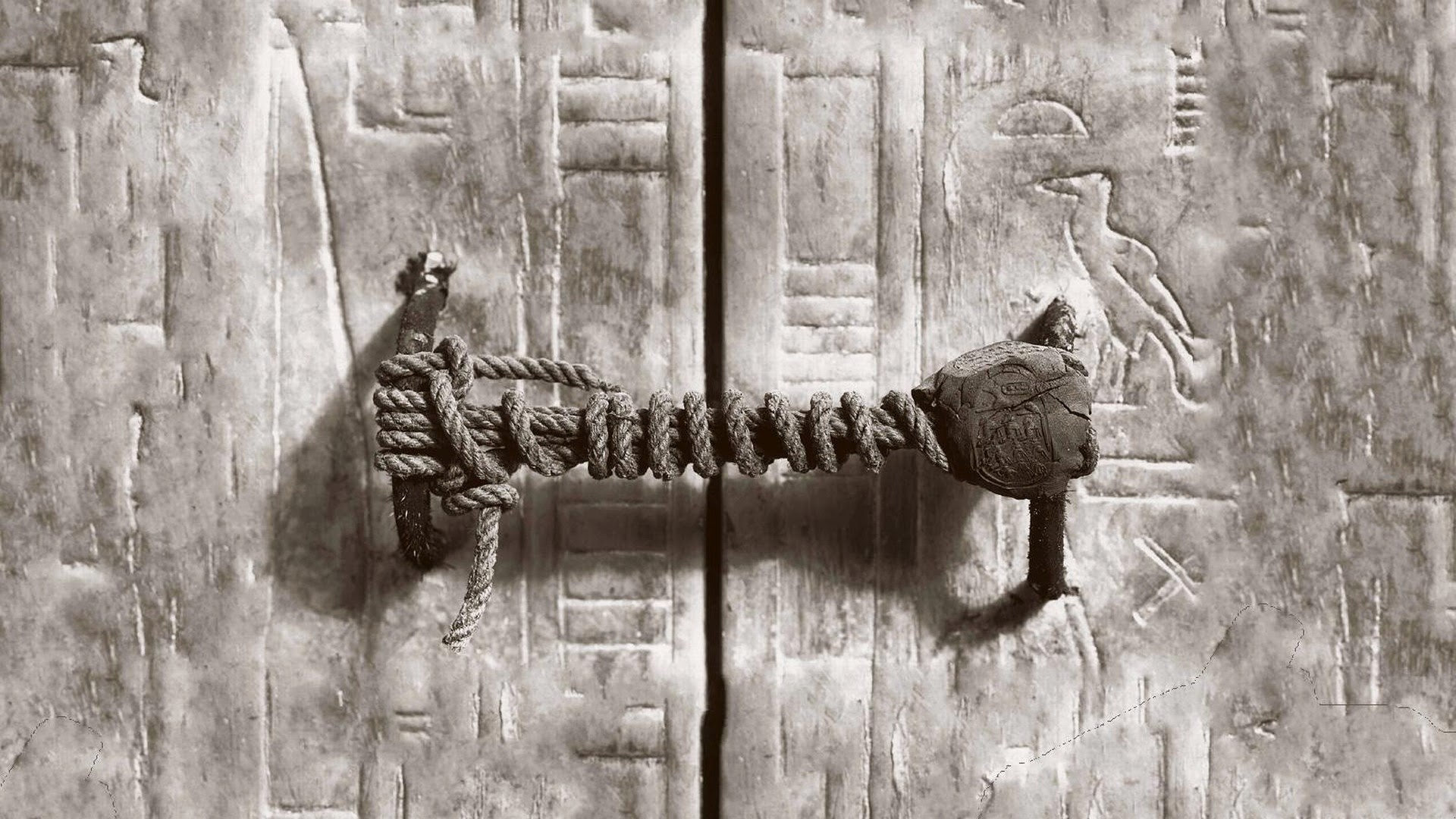Could you sever the cord that had sealed Tutankhamun's golden burial for 3,000 years?
“Ten years of toil had not been wasted and our hopes were to be realized with a result far exceeding our expectations”
In January 1924 Howard Carter began opening the great golden shrines that surrounded the sarcophagus of Tutankhamun.
The double doors of the first shine were closed only with sliding bolts, but the second and third shrines had been secured with elaborately tied ropes bearing clay seals stamped with the seal of the royal necropolis – a crouching jackal over nine kneeling, bound captives, representing the enemies of Egypt.
The seal told the discoverers that whatever lay beyond was untouched since the day of pharaoh’s burial, over 3,000 years earlier.
Here was the painful dilemma. You can imagine their excitement and anticipation over what lay behind the sealed doors. But to get there they had to cut the rope that had been carefully tied and sealed more than thirty-three centuries earlier.
And so it was with a mixture of excitement tinged with regret at having to sever the cords that Carter went on to reveal the king’s magnificent sarcophagus.
This photograph was taken by Harry Burton and shows the unbroken seal of the Third Shrine in January 1924. (c) Griffith Institute, University of Oxford.
